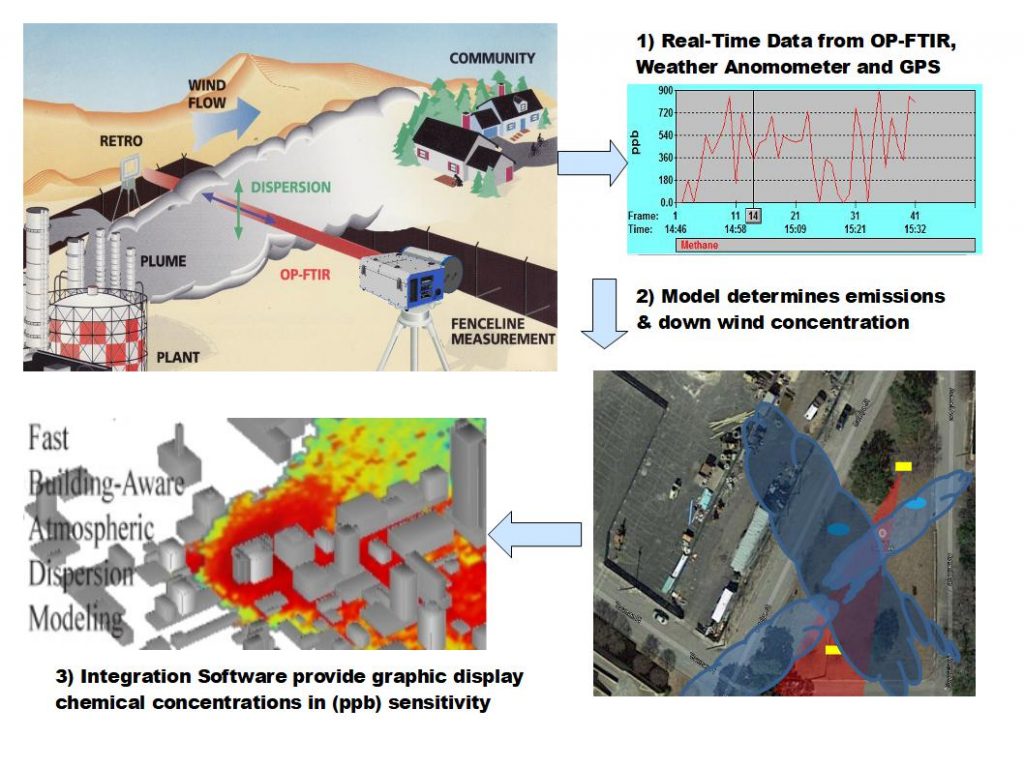
The RAM2000 G2 software (RMMSoft) has a built-in integrated feature that allows for combination of weather and OP-FTIR data to calculate emission rates.
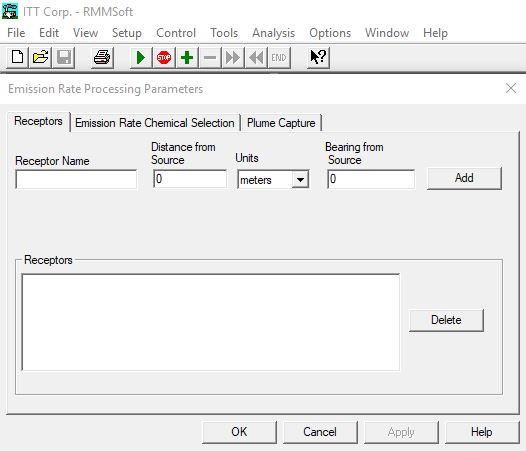
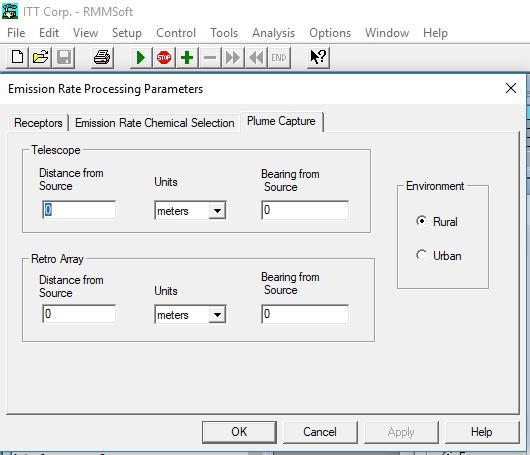
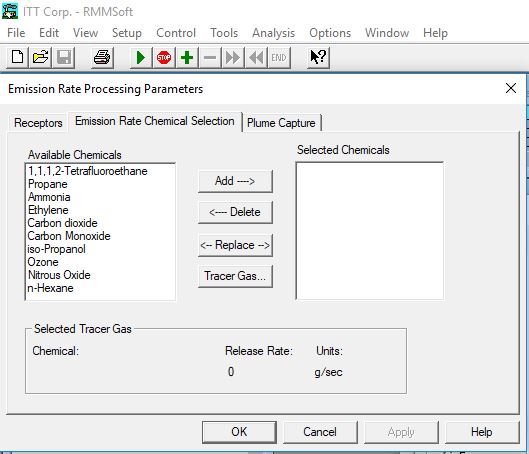
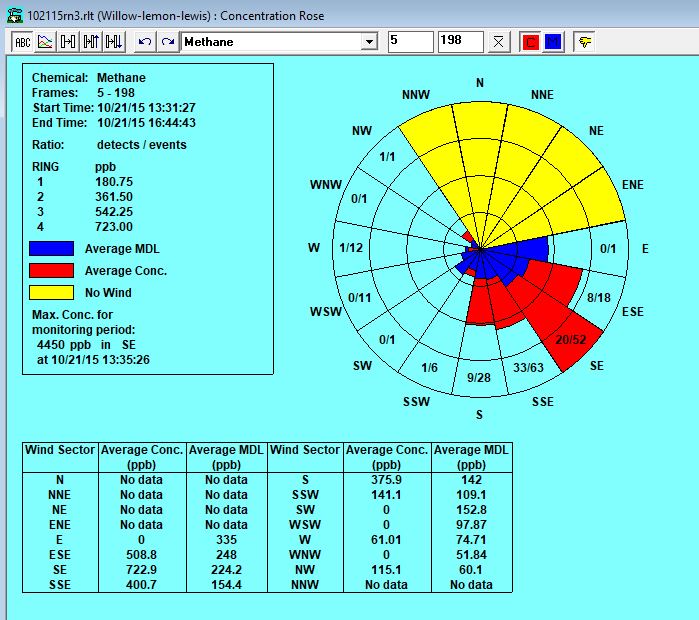
Modeling approach is based on application and data quality objectives.
Tracer Ratio Technique: Typically the most accurate way to determine emission rates is to ratio the measured concentration of a target chemical to the measured concentration of a tracer gas released at a known rate. RMMSoft has the tracer ratio algorithm built into the analytical software.
Radial Plume mapping (VRPM & HRPM) : Radial plume mapping techniques have been employed with KASSAY's RAM2000 OP-FTIR systems in Israel, Taiwan, Canada, and the US. The technique involves collecting open path FTIR data along different beam paths to determine plume characteristics and hot spots. Some examples of RPM projects are as follows:
Atmospheric Gaussian Dispersion Modeling of OP-FTIR Concentration Data
Steady State Gaussian Dispersion models (AERMOD): Without using tracer, a Gaussian model that predicts plume behavior can be employed. Meteorological data is combined with open path (eg: OP-FTIR) concentration data to 'unity' model emissions based on input parameters. Subsequently, emission rates of target chemicals are determined. KASSAY employs an integrated solution for real-time emission rate determination named ecalc based on AERMOD.
Inverse Steady State (sometimes called Backward Lagrangian) models: KASSAY's RAM2000 OP-FTIR data can be inverse modeled using Lagrangian Stochastic (bLS) models. Both the HEGADAS-S and the WindTrx(R) have been utilized to determine emission fluxes from large disposal ponds.
Non Steady State (Puff Dispersion) model: For large areas such as industrial parks, KASSAY supplies an integrated model named RAM-PUFF which is based on CALPUFF. Point, area, and line sources can be simulated as a 'bouyant puff' or a 'continuous stream.' RAM-PUFF allows for source attribution and plume finding in real time.
RAM-Puff-Marketing:(pdf file) • RAM-Puff-Marketing:(presentation file)
Automated-Plume-Finding-Software (contact KASSAY for more info...)
